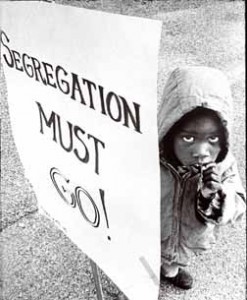58 years after Brown: More Separate, Less Equal
 Just last week, the United States celebrated the 58th anniversary of the Brown v. Board of Education decision which made segregation in public schools illegal. Sadly, in the 58 years that have followed the landmark decision schools have become more segregated and we are having fewer conversations about these segmented opportunities. In a moment when the nation is happy to declare race no longer an issue and poverty as perpetrator, it’s going to take a more nuanced conversation to emerge. Here’s my take on Ebony.com.
Just last week, the United States celebrated the 58th anniversary of the Brown v. Board of Education decision which made segregation in public schools illegal. Sadly, in the 58 years that have followed the landmark decision schools have become more segregated and we are having fewer conversations about these segmented opportunities. In a moment when the nation is happy to declare race no longer an issue and poverty as perpetrator, it’s going to take a more nuanced conversation to emerge. Here’s my take on Ebony.com.
Despite the rhetoric of change and racial transcendence the schools that our children attend are deeply segregated. In fact, according to scholars like Gary Orfield, schools are more racially segregated now than they were in the Jim Crow South. However, today’s segregation is so pernicious because it is overlooked and we, as a country, continue to fail to address school segregation’s root in housing segregation. If we are to address the issue of quality schooling and segregation we must move beyond two common errors. The first error is believing that segregation is the problem. The second error is believing that segregation is not a problem. Read More
Also, check out the Schott Foundation’s recent report on NYC Schools – “A Rotting Apple: Education Redlining in New York City.”
Filed under: Activism, Affirmative Action, Black Men, Black Women, Boundaries, Campus Life, Class, Ebony, Economics, Education, Harlem, New York City, Public Policy, Race, Racism, Sociology, Waiting for Superman, Youth


